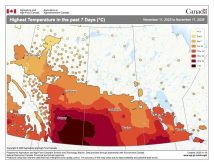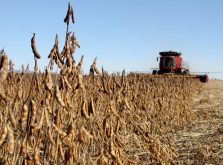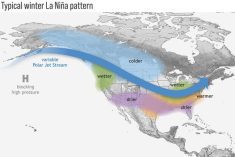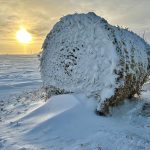After nearly 11 months of global record-setting temperatures, North America has had its turn seeing the warmest weather on the planet — at least when compared to average.
I’ll have to admit: It really bugs me when people use the infamous line, “Where is global warming now?” every time temperatures in their region are colder than expected. These same people seem to shut up pretty quickly when temperatures are warmer than expected. But again, the term is ‘global’ — not ‘what’s happening in my backyard’ — warming.
This is exactly what we have seen across a large part of North America during the last part of October and the first half of November. While temperatures across Siberia have been colder than average, temperatures across central North America and the high Arctic have soared to record levels. Temperatures during the period have, on average, been between 5 C and 20 C above long-term averages. That’s right, as much as 20 C above average over the Arctic Ocean.
Read Also
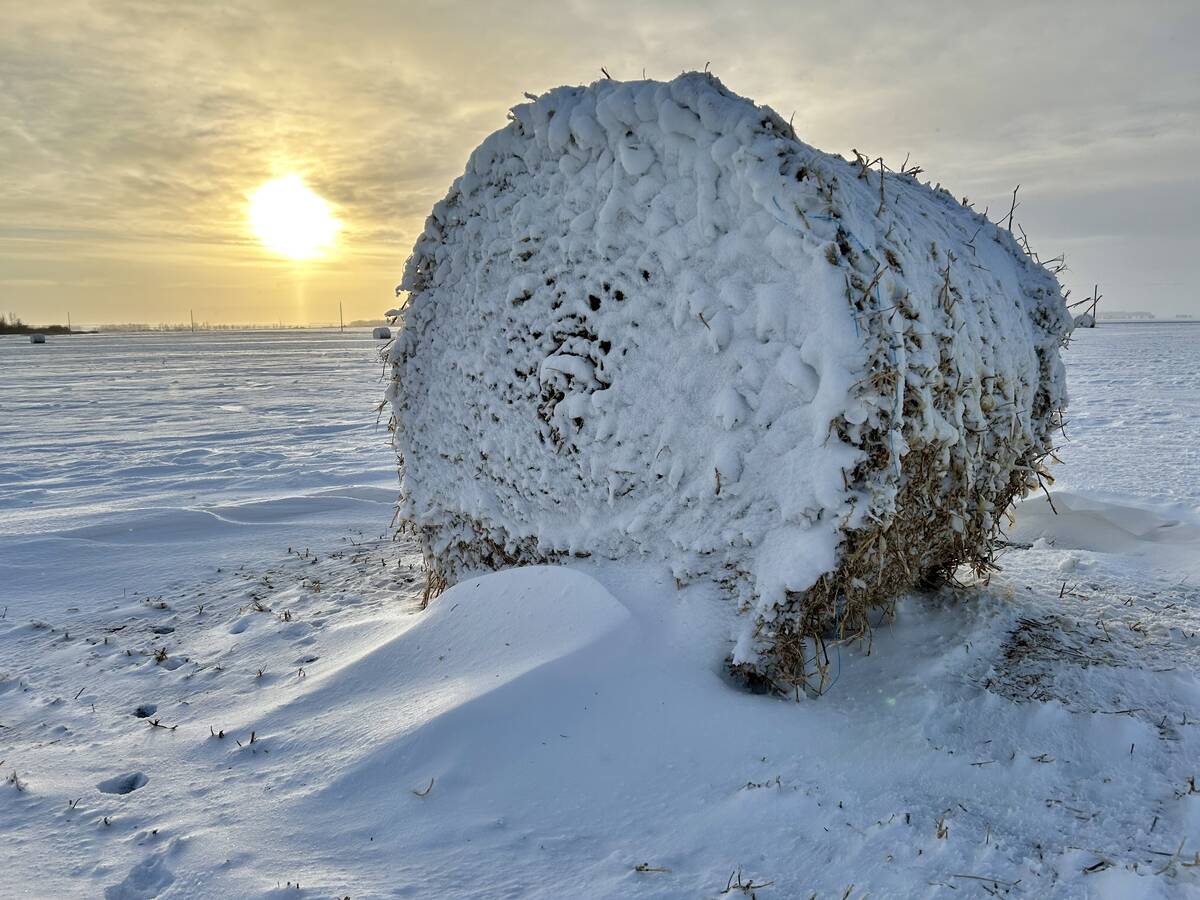
Prairie winter snowfall forecast 2025-2026
How much snow should farmers in Alberta and elsewhere on the Canadian Prairies expect for the rest of December 2025 and into January-February 2026?
What we do have to remember is that short-term warmer periods and cold snaps are weather. The frequency and duration of such events are climate. We will continue to see both warm and cold snaps, but as the records are showing, the warm snaps are beginning to significantly outnumber the cold ones.
This leads us to this issue’s topic, the winter forecast. Or rather, the latest guesses as to what might unfold for us weather-wise this winter. With what looks to be a shift to a much more winter-like pattern taking place across the Prairies, I figured it was time to take a look at this.
To begin, let’s look at the current conditions across the Pacific Ocean.
The El Niño that helped drive record-breaking global temperatures over the last couple of years came to an end late this spring and ocean temperatures across the equatorial Pacific have been near to slightly below average since then. In early November, the National Oceanic and Atmospheric Administration (NOAA) officially declared that La Niña conditions have been met and that we should expect a weak La Niña to remain for much of this winter. What is interesting with this La Niña setup compared to previous ones, is that ocean temperatures to the north of the La Niña region are much warmer. What effect this will have on our weather is uncertain. La Niña winters tend to be colder and snowier than average across the Canadian Prairies. But with only a weak La Niña in place, combined with the warmer waters over the mid-latitude Pacific, it is hard to say what will happen.
Another part of the world that seems to have a connection to us in determining our winter weather is northern Eurasia. This region has seen an early start to winter with plenty of cold and snow. This often creates a pattern that brings colder weather to our part of the world later in the winter. Again, time will tell if this will occur this year. Interestingly, the longer-term weather models that try and predict this are calling for warmer-than-average temperatures across our region for most of the winter.
Now, let’s look at some of the actual forecasts to see if there is any kind of consensus between them.
Starting off with Environment Canada, its current long-range forecast is calling for above-average temperatures to start off the winter, slowly cooling to nearly to slightly above average by the end of the winter. Its forecast shows the best chances of warm weather over the eastern Prairies. As for precipitation, it is calling for near-average amounts early on, with near- to slightly above-average amounts later on. NOAA’s winter outlook is calling for near-average temperatures across all three Prairie provinces, with above-average amounts of precipitation over the southern half of both Alberta and Saskatchewan and near-average amounts over Manitoba.
The Weather Channel is also calling for above-average temperatures to start the winter, with the eastern Prairies transitioning to near- to slightly below-average temperatures during the second half of winter. Unfortunately, I couldn’t find any precipitation forecast from it.
Accuweather’s Canadian winter forecast is calling for below-average temperatures across the Prairies, with below-average precipitation across Manitoba and Saskatchewan. Alberta is expected to see near-average amounts, with above-average amounts over extreme western regions.
Now on to our two almanacs. The Canadian Farmers’ Almanac appears to be calling for near- to below-average temperatures as it mentions fair and frigid several times. It also looks like it will be a snowy winter as it mentions storms with heavy snow in every month.
The Old Farmer’s Almanac is calling for a very cold winter with near- to slightly above-average snowfall.
Last but not least is my forecast. I think that we’ll see an up-and-down winter with several shots of cold weather, with near- to above-average temperatures in-between. Precipitation will be above average overall, with the central and eastern Prairies having the best chance of seeing above-average snowfall.
Now, as usual, we will just have to sit back and see what Mother Nature throws at us this year.





